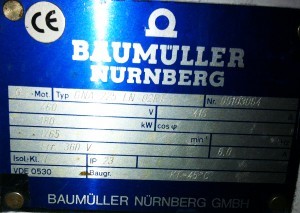DC Motor Efficiency Explained
It is a commonly held view in industry that an AC high efficiency motor and inverter is better in so many ways that an older DC motor and drive. These are the main reasons:
- Increased efficiency leading to power and cost savings.
- Reduced maintenance cost – no brushes, carbon, commutators or tachos to worry about.
- Reduced production downtime to carry out maintenance.
- AC motors and inverters are standard, off the shelf for quick replacements.
- Improved power factor leading to reduced electricity bills.
DC Motor Efficiency Explained
But how do we calculate the savings due to the increased efficiency? We’ve heard anything from 5% savings to 40% savings in power. Modern AC motors and inverters have declared efficiencies and regulated test methods so we can calculate what the new AC running costs will be. But when DC motors were designed, there were no such agreed test methods and the cost of electricity was not a major factor as it is now, so efficiency was less of a design driver. Then there are the added efficiency losses every time a DC motor gets rewound.
IDS has the solution. It was hiding in the DC motor’s nameplate all the time. We have developed a robust calculation that determines the DC motor’s efficiency. All we need from the existing DC motor application is:
- Full motor nameplate details (a photo is fine).
- Cooling fan motor nameplate details (a photo is fine).
- Typical DC motor operational speeds (rpm).
- Typical armature current (from the panel ammeter).
- Number of armature rewinds.
- Run hours per year.
- Average cost per kWh (p).
From this data we can then calculate efficiency of the DC motor, provide an ac motor and inverter upgrade specification, its cost and be definitive on the power savings that will be made.
If we could then have the annual maintenance cost of the DC machine as described above, the whole financial case can be generated for the DC to AC motor and inverter drive upgrade.

